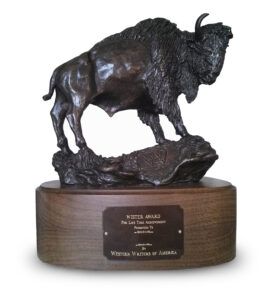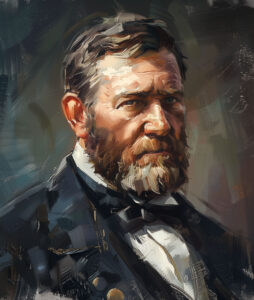Over the next two years an unprecedented series of special events marks the 200th birthday of the nation’s most controversial leader.
The 200th birthday celebration of the nation’s most studied and controversial president, Abraham Lincoln, begins this month and rolls on for two years of symposiums, documentaries, con- certs, contests, lectures, exhibits, banquets, receptions, plays, tours, poetry readings, school lessons and at least one bike tour. Along the way there will be a redesigned Lincoln penny, a commemorative coin, a special postage stamp and a rededication of the Lincoln Memorial.
Heading the effort is the 15-member Abraham Lincoln Bicentennial Commission, which was created seven years ago to determine the appropriate process of honoring the 16th president on this historic occasion. In addition to developing plans for a celebration on the federal level, the commission has worked diligently to generate interest at the local level, from school children to university professors and from the smallest towns to the biggest states.
“It’s like trying to hold onto a toboggan on a steep mountain traveling at high speed,” said commission co-chair Harold Holzer, who noted that the list of celebrations being held across the country is growing quickly. “No one can mess this one up. We’ve got films, books, conferences, a bike tour, everything.”
The commission was created by President Bill Clinton and Congress following passage of the Abraham Lincoln Bicentennial Commission Act of 2000. The commission members were chosen for their knowledge of Lincoln, as well as their dedication to educating the public about the president who steered the nation through four years of bloody civil warfare.
The commission has three co-chairs: Holzer, senior vice president for exterior affairs at New York’s Metropolitan Museum of Art, as well as author, co-author or editor of 26 books on Lincoln; Senator Richard Durbin (D-Ill.) of Springfield, where Lincoln lived before he headed to the White House; and Representative Ray LaHood (R-Ill.), who serves largely the same district that Lincoln represented during his one term in Congress.
Twelve other distinguished members round out the commission, which meets quarterly, usually in Washington. For their efforts, commission members receive only travel expenses to meetings, but a Congressional appropriation of $600,000 was approved to cover five staff members in addition to office expenses. A request is pending for $1 million for the next funding cycle.
The commission has also begun a drive to raise $12–$15 million to fund a variety of programs for the bicentennial. Jack Kemp, former secretary of Housing and Development under President George H.W. Bush, and William H. Gray III, former U.S. Representative and former CEO of the United Negro Fund, head that fundraising effort. See the commission’s Web site (www.abrahamlincoln200.org/) for information on tax-deductible contributions to support bicentennial programs.
Official inaugural events, hosted by the commission and the state of Kentucky, begin February 11 in Louisville with a symposium featuring author Doris Kerns Goodwin, a champagne reception, the premiere of a musical tribute to Lincoln and a dramatic presentation of Lincoln’s speeches by Holzer and renowned actor Sam Waterston.
The next day, Lincoln’s actual birthday, the stage moves to the national park at Hodgenville, the president’s birthplace, with a keynote speech by President George W. Bush and an address by Secretary of the Interior Dirk Kempthorne. Goodwin will also speak at that event.
This year isn’t actually the bicentennial of Lincoln’s birth—it’s the 199th—but by stretching the celebration over two years the commission figured there would be more time to remind everyone about the impact Lincoln had on the development of the country, and to honor his accomplishments and generate extended participation. The hope is it will help build momentum for Lincoln’s actual 200th birthday on February 12, 2009, when the commission has several big events planned for Washington.
Although Congress left the planning up to the commission, two mandates were made part of the 2000 legislation. The first was a redesign of the penny, and the other was a rededication of Washington’s Lincoln Memorial.
The familiar Lincoln penny dates from the centennial celebration of Lincoln’s birth, when the commission organized for that occasion decided to put a Lincoln profile on the front of the coin and stems of wheat on the back. This coin is often referred to as the “wheat back.” As part of the Lincoln sesquicentennial in 1959, the back of the penny was changed to the current image of the Lincoln Memorial. The present commission expects to have the penny reissued next year with four variations on the tail design, images depicting each of the places Lincoln lived: Kentucky, Indiana, Illinois and Washington.
The rededication of the Lincoln Memorial is planned for the spring of 2009, with an address by the next president of the United States and a concert to pay homage to Marian Anderson and Martin Luther King Jr., who made appearances at the memorial on several important occasions, such as the Civil Rights March in August 1963. The evening will close with a fireworks display.
Holzer explained that the commission chose to have other events on February 12 and save the one at the memorial for the warmer weather of May or June. He also said that when commission members recently visited the memorial, they noticed that the words for the Gettysburg Address and Lincoln’s Second Inaugural speech carved into the interior wall were difficult to read because the black stenciling inside the incised letters was deteriorating. According to Holzer, Durbin and LaHood managed to get Congress to allocate $30,000 to restencil the letters in time for the rededication ceremony.
In February 2009, the spotlight moves to Washington, D.C., for a Kennedy Center Birthday Gala on the 2nd. A “class concert and entertainment special” is planned in the Concert Hall, featuring military bands that will play 19th-century music and patriotic numbers. A dinner will follow.
A joint session of Congress is planned for the 12th, with a keynote address by either a political leader or a Lincoln scholar. The joint session will be followed by lunch and the opening of a Lincoln photo exhibit at the Library of Congress.
Holzer noted that the commission prefers the joint session be held in Statuary Hall, where the House of Representatives met during Lincoln’s term in Congress. “We know exactly where Lincoln’s desk was,” he explained. “The room is rather small, but everyone could stand for 30 or 40 minutes. We’d have seats for the older people. It would be the perfect place.”
According to a commission spokesperson, a national teach-in is scheduled for February 12. Its goal is to have “every student, in every classroom across the country, focused during at least one class period on the life and legacy of Abraham Lincoln.”
To make that possible, the Gilder Lehman Institute of American History has sponsored a series of high school level lesson plans that are available at the commission Web site. They were written by James Percoco, a social studies teacher at Northern Virginia’s West Springfield High School, and Howard Seretan, history chairman emeritus of Benjamin N. Cardozo High School in Washington, D.C.
The lessons include “Lincoln’s Position on the Question of Slavery and Its Extension,” “Lincoln’s Political Theory” and “Lincoln as President.” Each lesson plan is complete and ready to be downloaded. For example, “Lincoln and Women in the Civil War” is a five-page printout that includes a list of source materials but also provides the information needed from those various documents.
Questions are posed in the lessons, such as: “How did Lincoln respond to the problems and sufferings of women during the Civil War?” Also included are three paragraphs of background information and a list of three objectives and five discussion questions. In addition, there are suggestions for specific class activities. Another lesson plan, “Abraham Lincoln and the Arts,” includes five pictures of sculpture and paintings that can be used as teaching aids.
Each school that participates in the national teach-in will receive a certificate recognizing it as a “Lincoln Bicentennial School.” Teachers have access to a file titled “Online Resources,” which was compiled by Martha Beckort of Lanesville (Ind.) Community Schools in conjunction with the Historic Southern Indiana Lincoln Institute for Teachers, held annually at the University of Southern Indiana. It includes Lincoln-related Web sites for the federal government, the National Park Service and museums, libraries and information centers.
The commission has also established a speakers’ bureau made up of Lincoln experts from several states. The list, which includes four of the commissioners, provides a link to each of 40 speakers that includes background information, contact number(s) and, when applicable, any fees they charge. The list includes well-known speakers and authors, such as Jean H. Baker, Eric Foner, Doris Kerns Goodwin, Allen G. Guelzo, John Marszalek and Craig L. Symonds.
Also on the commission’s Web site is a Lincoln chronology that was originally published in This Fiery Trial: The Speeches and Writings of Abraham Lincoln, edited by William Gienapp.
“The most valuable thing the commission does is free,” Holzer said. “It’s our endorsement, kind of like a Good Housekeeping Seal of Approval. We have been asked to endorse hundreds of events, and we haven’t turned down one yet. They were all sincere, each in its own way.”
Originally published in the February 2008 issue of Civil War Times. To subscribe, click here.




